Lamb to the Slaughter SummaryLamb to the Slaughter is a murder mystery with dark humor. It was initially published in 1953. Roald Dahl, the master of children's literature and a British novelist, published his short story "Lamb to the Slaughter" in 1954 after receiving numerous rejections from print publishers because of his dark writing style. One of the primary concepts of the story focuses on the murder of a senior detective, Patrick Maloney, by his wife (Mary Maloney) in an act of anger after she learns of her husband's desire to separate from her. 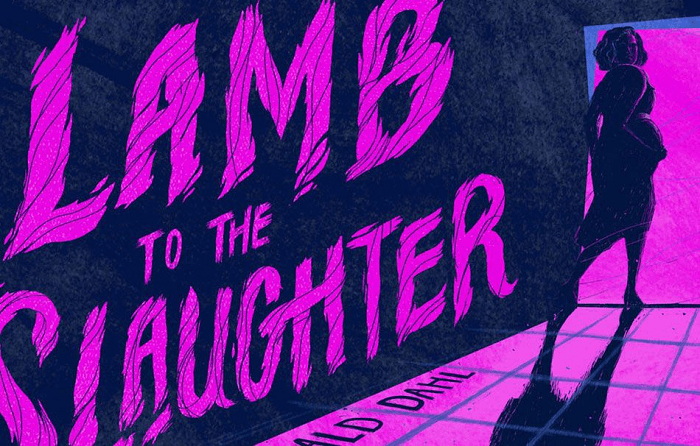
The rest of the story's plot is made up of the things that happen after the murder, which forces readers to rethink the dynamics of many relationships, including those between the husband and wife, the victim and the offender, and the motive and the crime. Plot SynopsisMary Maloney, who is six months pregnant, is waiting for her policeman husband, Patrick, to get home from work so they can have dinner. Mary loves her husband and considers his coming home from work her favorite part of the day, so his request for a divorce blindsides her. Mary comes into her kitchen after getting the news and starts cooking the leg of lamb from the refrigerator for dinner. The leg of the lamb ends up being used as a murder weapon rather than being cooked. Mary kills her husband instantly by striking the back of his skull with the frozen chunk of meat. Mary carefully sets up everything to look like Patrick was murdered by someone else to protect herself and her expecting child from what would happen if she were caught. She goes to the shop to give herself a cover, then contacts the police when she gets home and pretends her husband was murdered in a break-in. 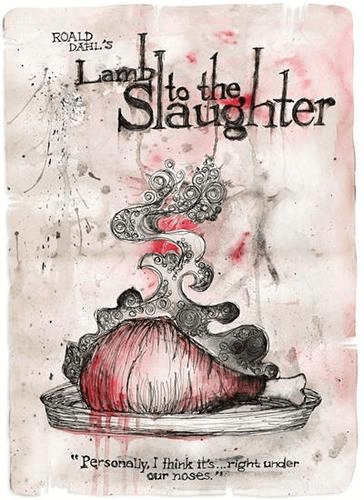
They start their investigation when the two police officers get to Mary's home. They accept her invitation for dinner without realizing that the leg of lamb they are enjoying is the murder weapon. Character Summaries1. Mary MaloneyShe is the pregnant wife of Detective Patrick, a docile and duty-oriented housewife who looks after her husband's needs. She shows her utmost patience even with her husband's silence and cold responses on the day the incident occurs. She cannot process what has happened and impulsively murders him when she finds out about her husband's betrayal. Since she is the wife of a detective, she is well aware of the penalties for a crime like murder but doesn't care for herself. However, she becomes concerned about her unborn child and develops a clever plan to resolve the issue. The usually hesitant woman transforms into a strong, manipulative character for the benefit of her unborn child. She succeeds in this, shown by the giggle she lets out near the tale's end. 2. Patrick MaloneyHe is an experienced investigator who works at a police station and is punctual in returning home at the same time each day. He and Mary are expecting a child, but when he unexpectedly tells her about his plans to split up, she reacts impulsively and kills him by striking him with a lamb's frozen leg, breaking the bones in his head. He comes out cold and aloof before his murder, unaware of his wife's selfless love. Although the reason for his decision to leave his wife is not stated, rumors suggest that there may have been an affair. Ironically, because his wife successfully destroyed the murder weapon and any ties to the criminal, despite being a police officer who spent his whole life serving justice to the victims of crime, his death does not result in any justice being served. 3. SamSam is the neighborhood grocer who frequently goes to buy kitchen supplies. He knows the couple's custom of attending dinner every Thursday, but Mary explains why the arrangement would be dropped that evening. She persuades him that she will be cooking for Patrick, which causes him to run to his store and load up on vegetables. He is unaware that Mary's visit will make him into a trustworthy alibi for killing her husband. 4. Jack NoonanHe is a good friend of the couple and a fellow detective with Patrick. He is a gentleman who tries to calm Mary, who seems to be struggling with her husband's death. He initially declines Mary's request for a drink, acting like an honorable officer on duty, but eventually falls out of concern for their friendship. In the event of Patrick's murder, his principle of "get the weapon, and you've got the murderer" does not guarantee a reward since, ironically, he and the other men eat the lamb that Mary used to strike her husband. Lamb to the Slaughter SummaryThe story opens with Mary Maloney patiently waiting for her husband, Patrick, to return from his work as a detective. She is six months pregnant, pleased in her marriage, and excitedly keeps an eye on the time while she sews. She is prepared to hang up Patrick's coat, get him a drink, and sit in silence with him while he rests when he arrives home. This after-work ritual is something Mary looks forward to because she spends the day alone at home. However, as Mary tries to care for her husband, Patrick ignores her efforts, drinks more alcohol than usual, and claims he has something important to tell her. 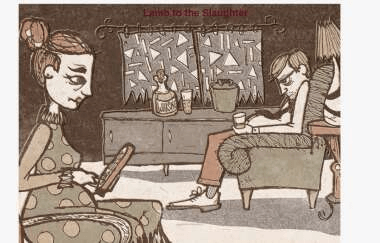
Patrick tells Mary he is leaving her as she looks over him nervously. Even if the narrator neglects details, it is evident that Patrick still intends to support her financially even though their marriage is no longer strong. Mary, still in shock, decides to keep things normal and goes to the cellar to get a frozen leg of lamb for their dinner. Patrick tells Mary not to bother and starts to walk away when Mary suddenly swings the frozen meat at the back of his head and kills him. Mary immediately considers how to shield herself and her unborn child from the consequences of murder as soon as she realizes her husband is dead. 
She places the meat in the oven and works on her voice and expression. At the same time, she cooks and then leaves the house to go to a neighboring grocery store, where she engages in a friendly conversation with Sam, the grocer, about the ingredients she needs to buy for her husband's dinner. She plays it cool on the way home, but when she "discovers" Patrick's body on the floor, she is stunned and sobs. She calls the police out of anxiety, and two officers-Jack Noonan and O'Malley, Patrick's colleagues and friends-arrive. Keeping up her act, Mary says that she went to the store and returned and found Patrick dead. Her planned conversation with Sam is revealed to be her defense as additional detectives question her, allowing her to avoid suspicion. 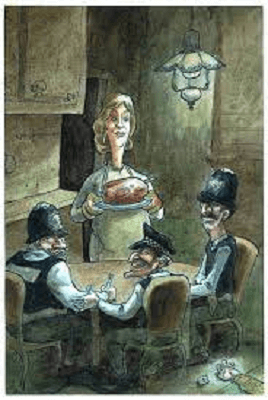
The police officers sympathize with Mary and make an effort to comfort her. Despite Sergeant Noonan's offer to take her elsewhere, Mary stays at the house while the police look for the murder weapon. Mary is informed by Jack Noonan that the murderer most likely used a blunt metal tool and that identifying the murder weapon will help identify the attacker. 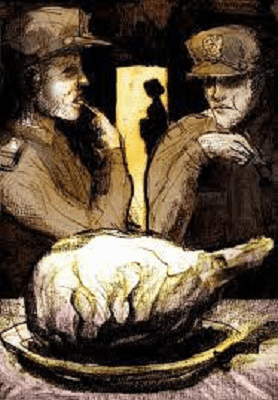
The police officers search the house and its surroundings for the murder weapon for over three hours without finding anything. They never investigate the possibility that the frozen beef cooking in the oven might be the murder weapon. Mary successfully gets the tired, hungry, and irritated officers to have some whisky and consume the leg of lamb that has, by this time, completed cooking. Mary listens from another room while the men consume the proof in the kitchen, laughing when one of the men considers that the murder weapon is "right under our very noses." 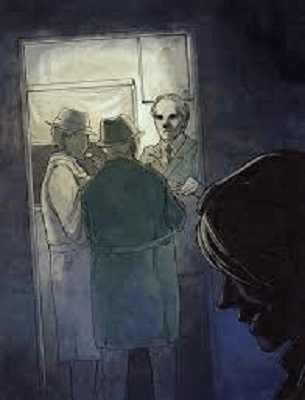
Lamb to the Slaughter AnalysisIt's fascinating to learn that Dahl's close friend Ian Flemming commented on a dry leg of lamb during one of their dinners and suggested that the leg may have been frozen for a considerable time. The foundation of the work of art is based on the lamb's leg's roughness and hardness. The story has the texture of a moral fable despite being set in a contemporary domestic setting due to Dahl's reference to the Bible in the title. The lamb is a symbolic representation of helplessness, innocence, and sacrifice. There are two possible meanings when the author uses a timid animal in his story. The lamb primarily portrays Mary, a devoted housewife unaware of her husband's worldliness. It is rude and unethical for Patrick to abandon his pregnant wife without giving any justification. He is assumed to give up Mary and their relationship to continue his suspected affair since the story fails to explain why he decided specifically. On the other hand, Dahl uses the modernist literary device of the lamb to flip the situation around. The lamb, typically the animal slaughtered here, is used to kill a man. Mary gets power over her husband through it that may not have been possible for her to have had before. The third-person narrator is restricted to Mary's thoughts and feelings. The entire story runs on the path of a detective story, departing only in exposing the murderer right at the beginning. 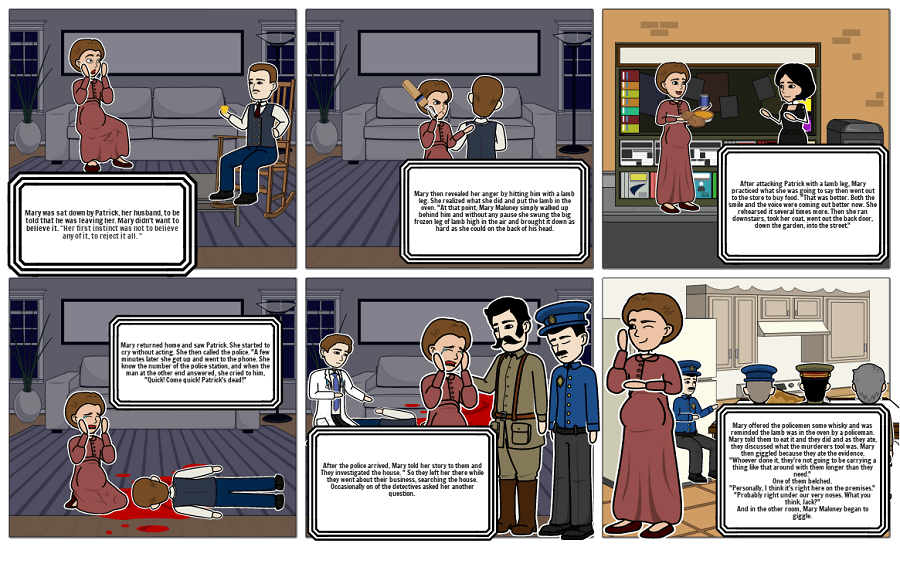
Establishing a guiltless personality at its best, developing an alibi, preparing a convincing counter story, hiding or destroying the murder weapon, and other aspects are present, just like in any detective story. Mary meets all the criteria, and her chuckle at the ending portrays a picture of her as a real criminal celebrating her success. The story's main highlighting device is irony, and Dahl uses all three types of irony in his artistic effort. Rhetoric also appears as Dahl chooses not to discuss Patrick's meeting with Mary. His statements, "Of course, I'll give you money and see that you're taken care of," lead readers to interpret their conversation as a matter of coming separation. His abrupt breakup had no apparent cause, leading readers to believe there may have been an affair. The author's portrayal of Mary as the perfect wife who serves her husband's needs and Patrick's show of ignorance and ungratefulness towards it contribute to part of the misogyny in the story. Like an ordinary housewife, she is limited to domestic duties. She takes control of her husband by killing him because of the intensity of her reactions to the news. Although a misogynist perspective would demand that she be put behind bars for a horrible crime like murder, one finds it appealing to sympathize with her because her acts result from her love and worry for her unborn child. This brings up the link between crime and intent. The moral imperative requires a man never to kill another, even while the motive for the act is anger for the betrayal and dishonesty her partner carried out against her. This leaves Mary in an "in-between" position for the readers who find it challenging to analyze her behavior entirely on one strand. As a result, Dahl creates a tale that is not only logical and precise in its action but also poses a crucial query about the crimes that people commit and whether their judgment should offer space for the aim of the legal system of justice.
Next TopicMidnight's Children Summary
|
 For Videos Join Our Youtube Channel: Join Now
For Videos Join Our Youtube Channel: Join Now
Feedback
- Send your Feedback to [email protected]
Help Others, Please Share









